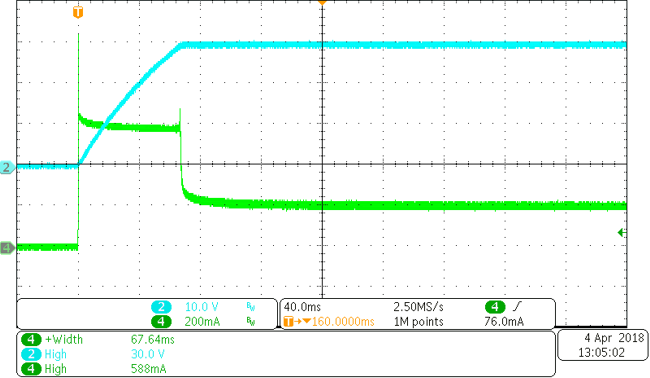TIDUEB8C July 2018 – March 2021 TPS274160
- Description
- Resources
- Features
- Applications
- 5
- 1System Description
- 2System Overview
- 3Hardware, Software, Testing Requirements, and Test Results
- 4Design Files
- 5Software Files
- 6Related Documentation
- 7About the Author
- 8Revision History
3.2.2.2 L+ Turnon Behavior
The turn on of the L+ line is tested by applying a capacitor of 1000 µF, shorted by 150-Ω resistive load. The IO-Link master has to deliver at least 400 mA for 50 ms to pass this test. This load simulates a IO-Link device with a large input capacitor and a static load.
 Figure 3-6 Testcase TCM_PHYL_INTF_ISIRM: – Power-On Supply Current Capability
Figure 3-6 Testcase TCM_PHYL_INTF_ISIRM: – Power-On Supply Current CapabilityFigure 3-6 shows the test results. Channel 2 shows the voltage on the L+ line, channel 4 shows the current on L+. As the load is capacitive and resistive, at the beginning the current is limited to 600 mA by the high-side switch, for about 70 ms. After this time, the resistive load remains and draws a current of 200 mA. Since this energy is more than the necessary 400 mA × 50 ms = 20 mA, this test is passed.
However, different IO-Link master implementations behave very different in this test.